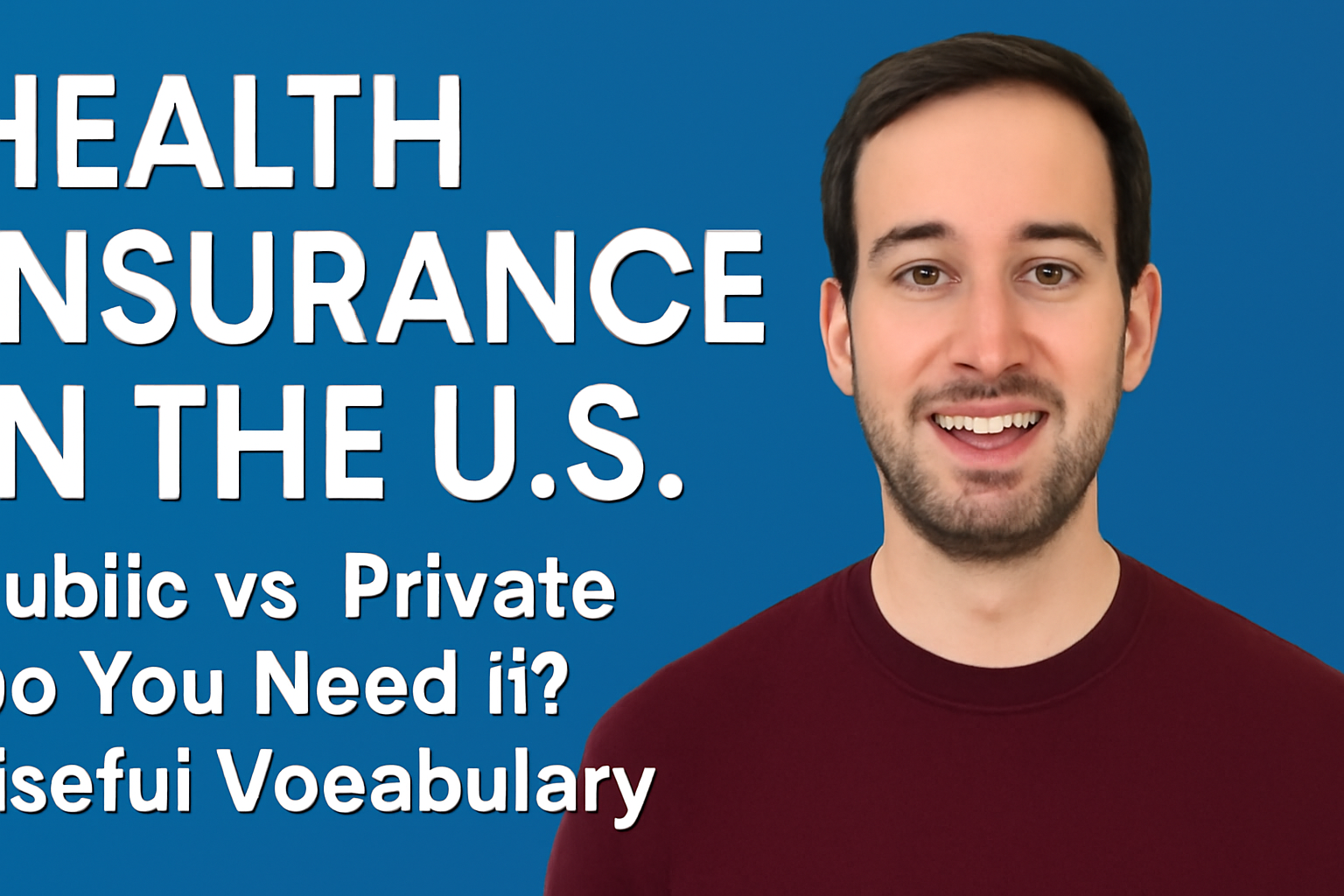we’re going to discuss a somewhat controversial topic in the U.S.—health insurance. We’ve partnered with studyinginUS.org to create a series of videos about studying, living, and traveling in the U.S. You can visit their website for more helpful articles if you’re planning on doing any of these things. In this video, I’ll be talking about three key things: public vs. private health insurance, whether or not you need health insurance, and important vocabulary you’ll need to understand when talking about health insurance in general—like what an HMO is, PPO, or a deductible. Let’s get started!
Public vs. Private Health Insurance
The concept of public vs. private health insurance differs between countries. In the U.S., most people have private health insurance, and the healthcare system is mainly a private one. Public health insurance is available to some citizens, people with green cards, the elderly, or those with low incomes. If you’re going to the U.S. to study or work, you’ll almost certainly have private health insurance.
Do You Need Health Insurance in the U.S.?
The short answer is yes! While not all visa types require health insurance, the state you’re living in or the university you’re attending might require you to have it. Many schools and universities offer their own health insurance for both domestic and international students. When I was in school, I had to opt out of the university’s health insurance because I already had my own. Some people might think U.S. health insurance is expensive, and while it can be, the cost of paying for healthcare yourself is often much higher. Most international students choose to get health insurance, and if you’re going to work in the U.S., your employer is required to offer you a health insurance option if you work for a medium to large-sized business. Small businesses might not offer this benefit, so be sure to ask your employer first.
Useful Vocabulary for Health Insurance
Let’s now look at some useful terms when signing up for health insurance. Your PCP (Primary Care Physician) is the doctor you see most often. Some people also refer to this as a family doctor or GP (General Practitioner). If you don’t have a PCP yet, health insurance websites typically have a search engine to help you find doctors in your area. Once you find a doctor, be sure to contact them to confirm they’re taking new patients.
HMO vs. PPO
Let’s dive into two common types of health insurance plans: HMO (Health Maintenance Organization) and PPO (Preferred Provider Organization).
An HMO means the insurance company has agreements with certain doctors in your area. If you have an HMO, you need to call the doctor’s office to confirm if they accept your insurance. If you need to see a specialist, you may need a referral from your PCP. With a PPO, you can typically visit any doctor that your insurance covers, and you don’t usually need a referral.
Understanding Health Insurance Costs
Now let’s talk about costs related to your health insurance. First, there’s the premium—this is the amount you pay every month for your insurance. It can range from $200 to $400 per month. Often, if you’re working full-time, your employer will cover part of this cost.
The deductible is the amount you need to pay in a year before your insurance company starts covering additional medical expenses. For example, if your deductible is $400 and you get a $900 medical bill, you’ll need to pay the first $400, and your insurance will cover the remaining $500 for that year.
Finally, there’s the co-pay, which is a fixed amount you pay each time you visit a doctor or use a healthcare service. For instance, you might always pay $20 for a regular doctor’s visit, or $50 for an emergency room visit.
Conclusion
There you have it! Some basic information about health insurance in the U.S. We hope this video was helpful, and thanks again to studyinginUS.org for collaborating with us on this content. Don’t forget to check out the Lingoni English app, and we also have Lingoni French and German apps. Visit Lingoni.com for more resources to improve your English, French, or German. See you there!



